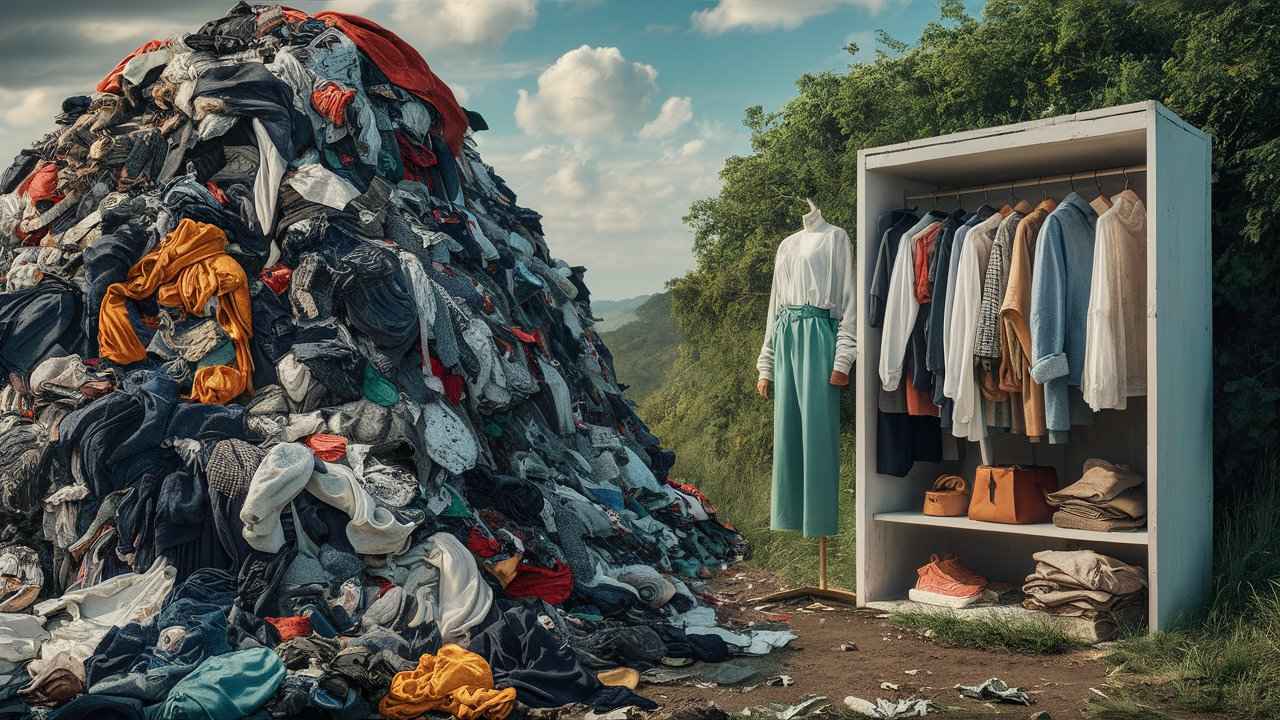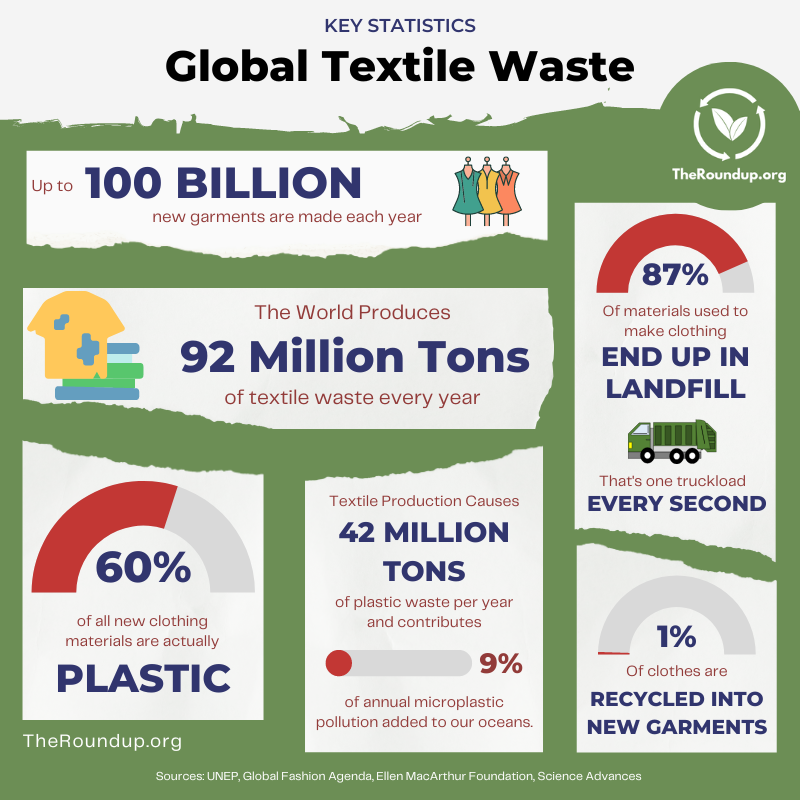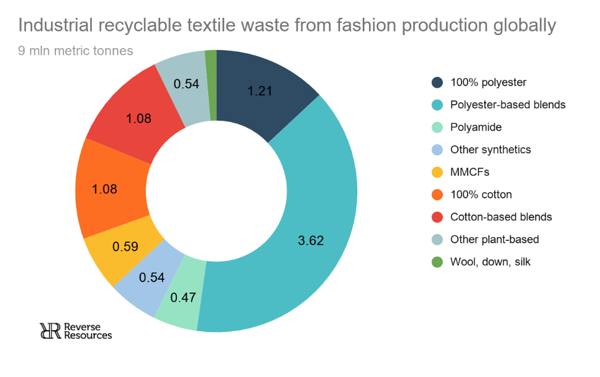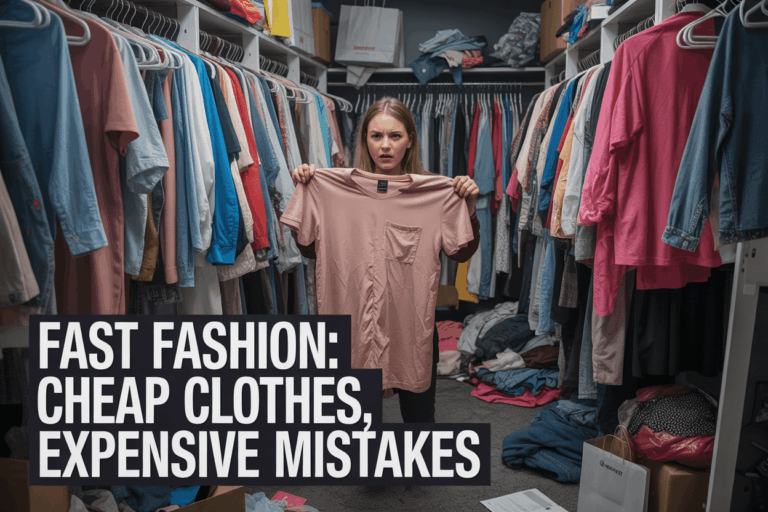9 Essential Strategies to Dramatically Reduce Fashion Waste: A Beginner’s Guide

Fashion waste is a growing problem in our consumer-driven world. Every year, 92 million tonnes of textile waste produced annually end up in landfills, contributing to environmental degradation and resource depletion.
As consumers, we have the power to make a difference by changing our habits and reducing our fashion footprint.
This guide will show you how to make more sustainable choices and minimize your contribution to fashion waste.
Understand Fashion Waste
What is fashion waste?
Fashion waste refers to 10% of global carbon emissions attributed to the industry’s discarded clothing, textiles, and accessories that end up in landfills or incinerators. This includes everything from unworn items to worn-out garments that could have been repaired or recycled.
Sources of fashion waste
The main sources of fashion waste include:
- Fast fashion: Cheap, trendy clothing designed for short-term use
- Overproduction: Brands making more clothes than needed
- Consumer behavior: Buying more than necessary and discarding clothes prematurely

Plan Your Purchases
Assess your needs
Before buying new clothes, take stock of what you already have. Do you really need that new shirt, or can you create new outfits with items you already own?
Importance of quality over quantity
Investing in well-made, durable clothing might cost more upfront, but these items will last longer and save you money in the long run.
Tips on how to avoid impulse buying
- Make a shopping list and stick to it
- Wait 24 hours before making a purchase
- Ask yourself if you’ll wear the item at least 30 times

Choose Sustainable Brands
What makes a brand sustainable?
Sustainable brands prioritize ethical production, use eco-friendly materials, and focus on creating long-lasting products.
Examples of sustainable fashion brands
- Patagonia
- Everlane
- Reformation

Care for Your Clothes
Proper washing techniques
- Wash clothes in cold water when possible
- Use gentle, eco-friendly detergents
- Air dry clothes to save energy and extend their lifespan
Repairing damaged items
Learn basic sewing skills to mend small tears or replace buttons. For more complex repairs, consider using a local tailor.
Upcycling old or worn-out clothes
Transform old t-shirts into cleaning rags or turn jeans into shorts. Get creative and give your clothes a second life!

Opt for Second-Hand and Swaps
Benefits of buying second-hand
- Reduces demand for new production
- Often more affordable
- Unique, one-of-a-kind pieces
How to find quality second-hand clothes
- Visit local thrift stores and consignment shops
- Explore online platforms like ThredUp or Poshmark
- Check for wear and tear before purchasing
Organizing and participating in clothing swaps
Host a clothing swap with friends or join community events. It’s a fun way to refresh your wardrobe without buying new items.

Recycle and Donate

How to recycle clothes properly
- Check with your local recycling center for textile recycling options
- Look for clothing recycling bins in your area
- Some brands offer recycling programs for their products
Where to donate wearable clothes
- Local charities and shelters
- Thrift stores
- Schools or community centers
Organizations that accept clothes donations
- Goodwill
- The Salvation Army
- Dress for Success

Advocate and Spread Awareness
Talking about fashion waste
Share what you’ve learned with friends and family. Start conversations about the impact of fast fashion and the benefits of sustainable choices.
Supporting policies for sustainable fashion
- Sign petitions for better environmental regulations in the fashion industry
- Support politicians who prioritize sustainability
- Encourage your favorite brands to adopt more sustainable practices
Engaging on Social Media
Use your social media platforms to share tips, promote sustainable brands, and raise awareness about fashion waste.

Conclusion
Reducing fashion waste is a journey that begins with small, mindful choices. By planning our purchases, choosing sustainable brands, caring for our clothes, embracing second-hand options, recycling responsibly, and spreading awareness, we can all make a significant impact. Let’s commit to making more sustainable fashion choices and inspire others to do the same. Together, we can create a more sustainable future for fashion.







I do trust all the ideas you have presented to your post. They are really convincing and will certainly work. Nonetheless, the posts are too quick for newbies. May just you please extend them a bit from next time? Thank you for the post.
Hello, i believe that i noticed you visited my website thus i came to “return the choose”.I am attempting to in finding issues to enhance my site!I suppose its ok to use a few of your concepts!!
Hello very nice website!! Man .. Beautiful .. Superb .. I will bookmark your site and take the feeds also…I’m glad to find numerous useful information right here in the submit, we’d like develop extra techniques in this regard, thank you for sharing.